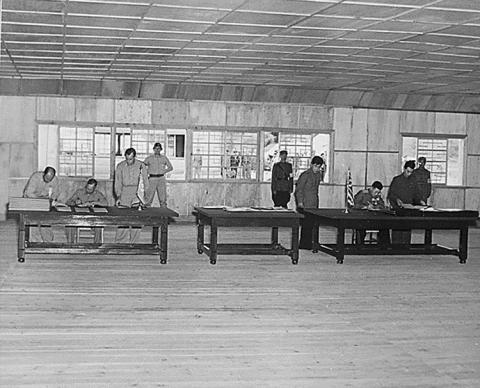
Description
General W. K. Harrison, Jr., is shown in this photograph signing armistice ending the three-year Korean conflict. Harrison is at the left table, while North Korean General Nam Il is at the right table. According to the National Archives, 158 meetings happened over a two-year period to reach this point. The armistice agreement ended open hostilities, created the "demilitarized zone" at the 38th parallel to be a 4,000-meter-wide zone between North and South Korea, arranged for release and exchange of prisoners of war and set up a committee to discuss any violations of the agreement that arise. This military agreement remains in effect today. In the end though, no treaty was ever signed.
Source-Dependent Questions
- Look closely at the photo and describe the surroundings. What national symbols do you see in this photo?
- The armistice agreement ended open hostilities, created the "demilitarized zone" at the 38th parallel to be a 4,000-meter-wide zone between North and South Korea, arranged for release and exchange of prisoners of war and set up a committee to discuss any violations of the agreement that arise. Why would the armistice highlight these points as part of the agreement?
- How might the lives of North and South Koreans have been different if the Korean War had ended with a treaty to which all countries agreed?
Citation Information
"General W. K. Harrison, Jr., signs armistice ending 3-year Korean conflict. General Harrison, left table, and North Korean General Nam Il, right table, sign documents.," 23 July 1953. Courtesy of National Archives